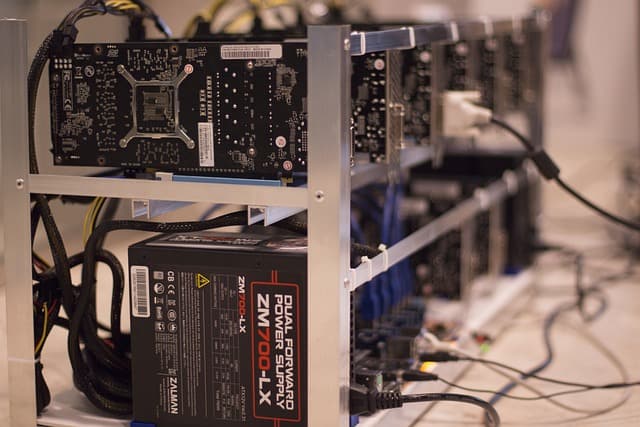The world of cryptocurrency has been forever changed by Bitcoin and its memorable transactions. This article takes you on a captivating journey through the evolution of Bitcoin, from its early days as a digital currency to its current status as a symbol of prosperity.
We explore the groundbreaking first-ever transaction, the infamous ‘Bitcoin Pizza’ purchase, the shocking Silk Road scandal, and other noteworthy events that showcase the transformative power of Bitcoin.
Starting with its humble beginnings, Bitcoin quickly gained momentum as a decentralized digital currency that promised a new era of financial freedom. The article delves into the very first Bitcoin transaction, where Laszlo Hanyecz famously exchanged 10,000 Bitcoins for two pizzas, setting the stage for future transactions that would redefine the value of this cryptocurrency.
We then dive into the world of the Silk Road, an online black market that accepted Bitcoin as its primary form of payment. The subsequent shutdown of this illicit marketplace due to illegal activities sent shockwaves throughout the cryptocurrency community and highlighted the challenges and controversies surrounding Bitcoin’s use in the global economy.
Throughout the article, we witness how Bitcoin has evolved beyond its initial purpose as a means of exchange, becoming a symbol of prosperity for early adopters and investors. From the extreme volatility of its price to the unprecedented wealth generated by Bitcoin millionaires, we uncover the economic impact and wealth creation potential that has made Bitcoin a household name.
Join us as we explore the memorable Bitcoin transactions that have shaped the digital currency landscape and continue to shape the future of finance.
The First Bitcoin Transaction Ever
The first recorded bitcoin transaction occurred on January 12, 2009, when Satoshi Nakamoto demonstrated the functionality of the cryptocurrency by sending 10 bitcoins to Hal Finney. This transaction was a significant milestone for bitcoin as it showcased the potential of peer-to-peer digital transactions without the need for intermediaries or centralized authorities.
At that time, bitcoin was relatively unknown and had negligible value. It wasn’t until 2010 that the first real-world purchase using bitcoin took place. In what became known as the ‘bitcoin pizza’ transaction, Laszlo Hanyecz traded 10,000 bitcoins for two Papa John’s pizzas. This transaction emphasized the potential value of bitcoin and sparked discussions about its future as a medium of exchange.
Since then, bitcoin has made remarkable progress. It has gained global recognition as a legitimate form of currency and has been used for various transactions, ranging from everyday purchases to large-scale investments. The first bitcoin purchase laid the foundation for a new era of digital transactions, challenging the traditional financial system and providing individuals with an alternative means of conducting business.
The Infamous “Bitcoin Pizza” Purchase
The ‘Bitcoin Pizza’ purchase, made by programmer Laszlo Hanyecz on May 22, 2010, is a significant event in the history of cryptocurrency. Hanyecz paid 10,000 bitcoins for two pizzas, a transaction that has since become a symbol of the remarkable appreciation of digital currency.
This milestone showcases the early adoption of bitcoin as a medium of exchange and highlights how much the cryptocurrency market has evolved over time. To illustrate the value appreciation, consider the following table:
| Date | Bitcoin Price (USD) | Value of 10,000 Bitcoins (USD) |
|---|---|---|
| May 22, 2010 | $0.003 | $30 |
| December 17, 2017 | $19,783 | $197,830,000 |
| September 1, 2021 | $47,000 | $470,000,000 |
As shown in the table, the value of those two pizzas has skyrocketed over the years, reaching a staggering worth of hundreds of millions of dollars. This serves as a cautionary tale for those underestimating the potential of cryptocurrencies.
The ‘Bitcoin Pizza’ purchase serves as a reminder of the early days of bitcoin and the unpredictable nature of the digital currency market. It exemplifies the immense value that can be generated from seemingly small transactions in the world of cryptocurrencies.
The Silk Road Scandal
The Silk Road scandal, one of the most notorious chapters in Bitcoin’s history, brought to light the legal implications and consequences associated with the use of cryptocurrencies for illicit activities.
This online black market, operating on the dark web, allowed users to buy and sell drugs, counterfeit money, and even hire hitmen using Bitcoin as the preferred method of payment.
The exposure of the Silk Road not only led to the arrest and conviction of its founder, Ross Ulbricht, but also shed light on the broader impact of cryptocurrencies on the dark web and the ongoing efforts to regulate and combat illegal activities in the digital realm.
Legal Implications and Consequences
The Silk Road scandal had significant legal implications and consequences for the cryptocurrency community. This notorious online marketplace facilitated illegal activities such as drug trafficking, hacking tools, and counterfeit money, all conducted using Bitcoin.
The founder, Ross Ulbricht, operated under the pseudonym ‘Dread Pirate Roberts’ and was arrested in 2013. He faced charges including money laundering, computer hacking, and conspiracy to commit drug trafficking. Ultimately, Ulbricht was convicted and sentenced to life in prison without the possibility of parole.
This case shed light on the challenges faced by law enforcement agencies in dealing with cryptocurrencies and spurred discussions about the necessity of regulation in the industry. The Silk Road scandal served as a wake-up call for governments and cryptocurrency enthusiasts alike, prompting increased efforts to establish legal frameworks and address the potential misuse of digital currencies.
Impact on Dark Web
The Silk Road scandal had a significant impact on the dark web, revealing the extent of illegal activities conducted using Bitcoin. The Silk Road was a notorious online marketplace that facilitated the sale of drugs, weapons, and other illicit goods and services. It operated by utilizing the anonymity provided by Bitcoin transactions, making it challenging for law enforcement agencies to track down those involved. The downfall of the Silk Road in 2013 emphasized the necessity for increased regulation and oversight of cryptocurrencies. Additionally, it prompted authorities to crack down on similar dark web marketplaces, leading to heightened vigilance in combating illegal activities in the digital realm. The table below summarizes the impact of the Silk Road scandal on the dark web.
| Impact on Dark Web |
|---|
| Increased scrutiny and monitoring of cryptocurrency transactions |
| Closure of similar illicit marketplaces |
| Shift towards alternative cryptocurrencies for anonymity |
The Silk Road scandal served as a wake-up call for both the dark web community and law enforcement agencies, prompting a reevaluation of the role of cryptocurrencies in facilitating illegal activities.
The Mt. Gox Collapse
The Mt. Gox Collapse stands as one of the most significant events in the history of Bitcoin. Despite warning signs and growing concerns, the exchange ignored the signs of impending disaster. As a result, investors lost millions of dollars, dealing a severe blow to both their trust in the cryptocurrency industry and the overall reputation of Bitcoin itself.
The collapse of Mt. Gox had far-reaching consequences that continue to shape the landscape of digital currencies today.
Warning Signs Ignored
The collapse of Mt. Gox could have been prevented if the warning signs had not been disregarded. One significant warning sign was the persistent withdrawal issues faced by users. Despite numerous complaints and red flags, the exchange continued to operate, resulting in the loss of millions of dollars’ worth of bitcoins. This disregard for customer concerns should have served as a clear indication of deeper problems within the platform.
Some of the warning signs that were ignored include:
- Delays in processing withdrawals, with some users waiting for months to receive their funds.
- Lack of transparency regarding the exchange’s financial situation.
- Unexplained downtime and maintenance issues, which prevented users from accessing their accounts.
- Inconsistent communication from Mt. Gox’s management, leaving users uninformed about the state of their investments.
- Reports of suspicious activity, including unauthorized transactions and missing funds.
These warning signs should have alerted investors and regulators to the troubled state of Mt. Gox, prompting immediate action to prevent the devastating collapse that eventually occurred.
Lost Investor Funds
The collapse of Mt. Gox resulted in the tragic loss of investor funds, serving as a stark reminder of the devastating consequences that can arise from ignoring warning signs. Once the largest Bitcoin exchange globally, Mt. Gox filed for bankruptcy in 2014 after misplacing approximately 850,000 Bitcoins, valued at around $450 million at the time. This event sent shockwaves throughout the cryptocurrency community and raised concerns regarding the security and regulation of digital currency exchanges. It acted as a wake-up call for investors, underscoring the importance of conducting thorough due diligence and prioritizing the safeguarding of their funds. The following table presents a summary of the key details related to the collapse of Mt. Gox:
| Exchange | Date | Amount Lost |
|---|---|---|
| Mt. Gox | 2014 | 850,000 BTC |
The collapse of Mt. Gox serves as a cautionary tale, highlighting the inherent risks involved in the cryptocurrency market and emphasizing the necessity for robust security measures and regulatory oversight.
Impact on Cryptocurrency Industry
The collapse of Mt. Gox had a significant impact on the cryptocurrency industry, revealing vulnerabilities and prompting calls for increased security measures and regulatory oversight.
This incident, which resulted in the loss of approximately 850,000 bitcoins, underscored the risks associated with centralized exchanges and the need for stronger safeguards to protect investor funds.
The following are five key consequences of the Mt. Gox collapse:
- Loss of trust: The incident eroded public trust in the security and reliability of cryptocurrency exchanges.
- Regulatory scrutiny: Governments worldwide began scrutinizing the industry, leading to the implementation of stricter regulations.
- Emergence of decentralized exchanges: The collapse of Mt. Gox accelerated the development of decentralized exchanges, enabling users to trade directly without relying on a centralized intermediary.
- Focus on security: The incident emphasized the importance of robust security measures, resulting in increased investment in cybersecurity solutions within the industry.
- Investor awareness: The collapse served as a wake-up call for many investors, highlighting the necessity for due diligence and caution when engaging in the cryptocurrency market.
The Winklevoss Twins’ Bitcoin Investment
The Winklevoss twins made a significant investment in Bitcoin, positioning themselves as early adopters of the digital currency. In 2013, they gained attention by announcing ownership of approximately 1% of all Bitcoins in circulation at that time.
This investment followed a $65 million settlement they received from a legal dispute with Mark Zuckerberg, the founder of Facebook. With a strong belief in Bitcoin’s potential, the twins founded Gemini, a reputable and regulated cryptocurrency exchange, in 2014. Gemini quickly became recognized as a leading platform for buying and selling digital assets.
The Winklevoss twins’ Bitcoin investment has proven to be highly profitable. As the price of Bitcoin soared, their holdings reached astronomical values, making them billionaires. Their success story not only brought them financial gains but also contributed to the mainstream acceptance and legitimacy of Bitcoin as a viable investment asset.
Beyond their financial success, the Winklevoss twins have played a significant role in shaping the cryptocurrency industry. They have been vocal advocates for robust regulation and investor protection, working closely with regulators to establish best practices and build trust in the market.
The First Bitcoin ATM Transaction
The first Bitcoin ATM transaction marked a significant milestone in the evolution of cryptocurrency adoption.
By introducing a familiar and accessible interface, the ATM revolutionized the way people could acquire Bitcoin, making it more convenient and user-friendly.
This innovation played a crucial role in attracting a broader audience to the world of digital currencies, paving the way for their widespread acceptance and integration into everyday life.
ATM Revolutionizes Bitcoin
Bitcoin ATMs have revolutionized the cryptocurrency landscape by providing a convenient and accessible way to convert digital assets into physical cash. These ATMs have significantly contributed to the widespread adoption of Bitcoin and other cryptocurrencies.
Below are some ways in which Bitcoin ATMs have transformed the crypto industry:
- Instant access: Bitcoin ATMs enable users to instantly buy or sell cryptocurrencies without the need for complicated online transactions.
- User-friendly interface: These ATMs feature intuitive interfaces that make it easy for both beginners and experienced users to navigate and complete transactions.
- Increased convenience: With Bitcoin ATMs located in various public places, such as shopping malls and airports, users can conveniently access their funds anytime and anywhere.
- Privacy protection: Bitcoin ATMs offer users a certain level of anonymity, as they do not require personal identification documents for small transactions.
- Global accessibility: Bitcoin ATMs have expanded the reach of cryptocurrencies, making them accessible to individuals in regions with limited banking infrastructure.
Impact on Cryptocurrency Adoption?
The impact of the first Bitcoin ATM transaction was significant in driving cryptocurrency adoption.
In October 2013, a Bitcoin ATM was installed in a coffee shop in Vancouver, Canada. This milestone allowed individuals to conveniently buy and sell Bitcoin using traditional currency.
By enabling easy conversion of cash into Bitcoin and vice versa, the ATM eliminated the need for complex online transactions or exchanges. This development played a crucial role in increasing the accessibility and acceptance of cryptocurrencies, making it easier for the general public to participate in the digital currency revolution.
The success of the first Bitcoin ATM transaction paved the way for the widespread proliferation of Bitcoin ATMs worldwide, further accelerating the adoption of cryptocurrencies.
The Bitcoin Auction
The early years of Bitcoin saw a significant event unfold with the occurrence of the first Bitcoin auction. Taking place in June 2011, this auction marked a crucial milestone in the cryptocurrency’s journey.
Below are five key facts about this groundbreaking Bitcoin auction:
- The Auctioneer: The auction was conducted on the well-known online platform Bitcointalk by a user named ‘dwdollar.’ Acting as the intermediary, this individual facilitated the trade between the seller and the highest bidder.
- The Seller: The seller, known by the username ‘SmokeTooMuch,’ aimed to sell 10,000 Bitcoins. During that time, the value of Bitcoin was relatively low, making the auction an opportunity for early adopters to acquire a substantial amount of this cryptocurrency.
- The Winning Bid: ‘Jercos’ emerged as the successful bidder, offering 10,000 BTC for a mere $50. This transaction has since become widely recognized as one of the most memorable events in Bitcoin’s history, as the value of those 10,000 Bitcoins has skyrocketed over time.
- The Significance: This auction shed light on the growing interest in Bitcoin and showcased people’s willingness to exchange real-world currency for this digital asset. It also demonstrated the potential for Bitcoin to evolve into a valuable investment.
- The Impact: The success of this auction played a pivotal role in paving the way for future Bitcoin transactions. It also contributed to the overall adoption and acceptance of cryptocurrency as a legitimate form of currency.
The first Bitcoin auction acted as a turning point in Bitcoin’s early years, highlighting its potential as both a digital currency and an investment opportunity.
The Bitcoin Mining Farm Acquisition
The acquisition of a Bitcoin mining farm represents a significant milestone in the cryptocurrency industry. These farms play a crucial role in verifying transactions and adding them to the blockchain, as the demand for Bitcoin and other cryptocurrencies continues to grow. Mining farms consist of powerful computers that solve complex mathematical problems to validate transactions and earn new Bitcoins as a reward.
Acquiring a mining farm enables individuals or organizations to enter the lucrative world of Bitcoin mining. It provides the necessary infrastructure and computing power to participate in the mining process. However, this acquisition often requires a substantial investment in hardware, electricity, and cooling systems.
Mining farms are typically located in regions with cheap electricity and favorable regulatory environments. Countries like China, the United States, and Russia are known for hosting large-scale mining operations due to their abundant energy supply and supportive policies.
By acquiring a mining farm, individuals or organizations have the potential to earn a significant return on their investment. However, it is essential to consider factors such as electricity costs, mining difficulty, and market volatility when entering the mining industry.
The acquisition of a Bitcoin mining farm is a strategic move towards establishing a foothold in the cryptocurrency world and capitalizing on the potential for financial gain.
The Bitcoin Donation Record
The establishment of a Bitcoin donation record showcases the philanthropic potential of the cryptocurrency industry and emphasizes the impact of acquiring a Bitcoin mining farm. Bitcoin’s decentralized nature and its ability to facilitate quick, borderless transactions make it an attractive option for charitable giving.
Below are five examples that highlight the power of Bitcoin donations:
- Hurricane relief: In the aftermath of Hurricane Dorian in the Bahamas, an anonymous donor made the largest Bitcoin donation to date, contributing over $5 million to help with the relief efforts.
- Education initiatives: The Bitcoin community has been actively supporting various educational projects worldwide. For instance, the BitGive Foundation has raised funds to provide scholarships, build schools, and improve educational resources in developing countries.
- Healthcare support: Bitcoin donations have played an instrumental role in funding medical research and providing assistance to patients in need. The Pineapple Fund, initiated by an anonymous Bitcoin millionaire, donated over $55 million to different healthcare organizations.
- Environmental causes: Bitcoin has also been utilized to support environmental conservation efforts. The Rainforest Foundation, for example, started accepting Bitcoin donations to help protect the Amazon rainforest.
- Humanitarian aid: Bitcoin donations have been crucial in providing aid to regions affected by conflict, natural disasters, and humanitarian crises. Organizations like the Red Cross and UNICEF have embraced Bitcoin as a means of receiving funds quickly and securely.
These examples demonstrate how Bitcoin can serve as a powerful tool for driving positive change and making a significant difference in the world.
The Rise of Institutional Bitcoin Transactions
The growing interest of institutions in Bitcoin has led to the rise of institutional Bitcoin transactions. Banks, hedge funds, and corporations are now actively participating in the cryptocurrency market by utilizing Bitcoin to diversify their portfolios and explore new investment opportunities.
To understand the significance of institutional Bitcoin transactions, let’s examine some notable figures:
- MicroStrategy: $1.145 billion in February 2021
- Tesla: $1.5 billion in February 2021
- Grayscale: $10 billion (as of March 2021)
- Fidelity: $7 trillion (as of March 2021)
These numbers demonstrate the increasing confidence institutions have in Bitcoin as a legitimate asset class. The substantial Bitcoin purchases made by companies like MicroStrategy and Tesla indicate a shift towards widespread acceptance.
Institutional Bitcoin transactions not only enhance the overall liquidity and stability of the cryptocurrency market but also validate Bitcoin’s value proposition. As more institutions join the Bitcoin movement, we can anticipate a further surge in institutional Bitcoin transactions in the future.
Frequently Asked Questions
How Does the First Bitcoin Transaction Ever Impact the Current State of the Cryptocurrency Market?
The first bitcoin transaction, while initially insignificant, has had a profound impact on the current state of the cryptocurrency market. It marked the beginning of a decentralized currency system that has gained widespread adoption and revolutionized financial transactions worldwide.
What Were the Consequences of the Infamous ‘Bitcoin Pizza’ Purchase for the Early Bitcoin Community?
The purchase of the infamous ‘bitcoin pizza’ had significant consequences for the early bitcoin community. It demonstrated the real-world value of bitcoin and sparked a wave of enthusiasm and adoption within the community.
How Did the Silk Road Scandal Affect the Public Perception of Bitcoin and Its Use in Illegal Activities?
The Silk Road scandal had a significant impact on the public perception of Bitcoin, as it showcased the potential for illegal activities facilitated by the cryptocurrency. This raised concerns about its use and led to increased scrutiny from regulatory authorities.
What Were the Main Factors Contributing to the Collapse of Mt. Gox and How Did It Impact the Trust in Bitcoin Exchanges?
The collapse of Mt. Gox was primarily due to security vulnerabilities, mismanagement, and alleged theft. This event significantly impacted trust in bitcoin exchanges, highlighting the need for stricter regulations and improved security measures in the cryptocurrency industry.
What Were the Reasons Behind the Winklevoss Twins’ Decision to Invest in Bitcoin and What Impact Did Their Investment Have on the Cryptocurrency’s Mainstream Adoption?
The Winklevoss twins’ decision to invest in Bitcoin was driven by their belief in its potential as a decentralized currency. Their investment not only provided legitimacy to the cryptocurrency but also contributed to its mainstream adoption and increased public awareness.
Conclusion
In conclusion, the journey of Bitcoin has been filled with astonishing and unforgettable transactions that have shaped its history.
From the first ever Bitcoin purchase to the infamous ‘Bitcoin Pizza’ transaction, and from the Silk Road scandal to the Mt. Gox collapse, each event has left a lasting impact.
As institutional interest in Bitcoin grows, the future of this digital currency seems promising. Despite the ups and downs, Bitcoin continues to captivate the world with its potential for prosperity and innovation.








Comments (No)